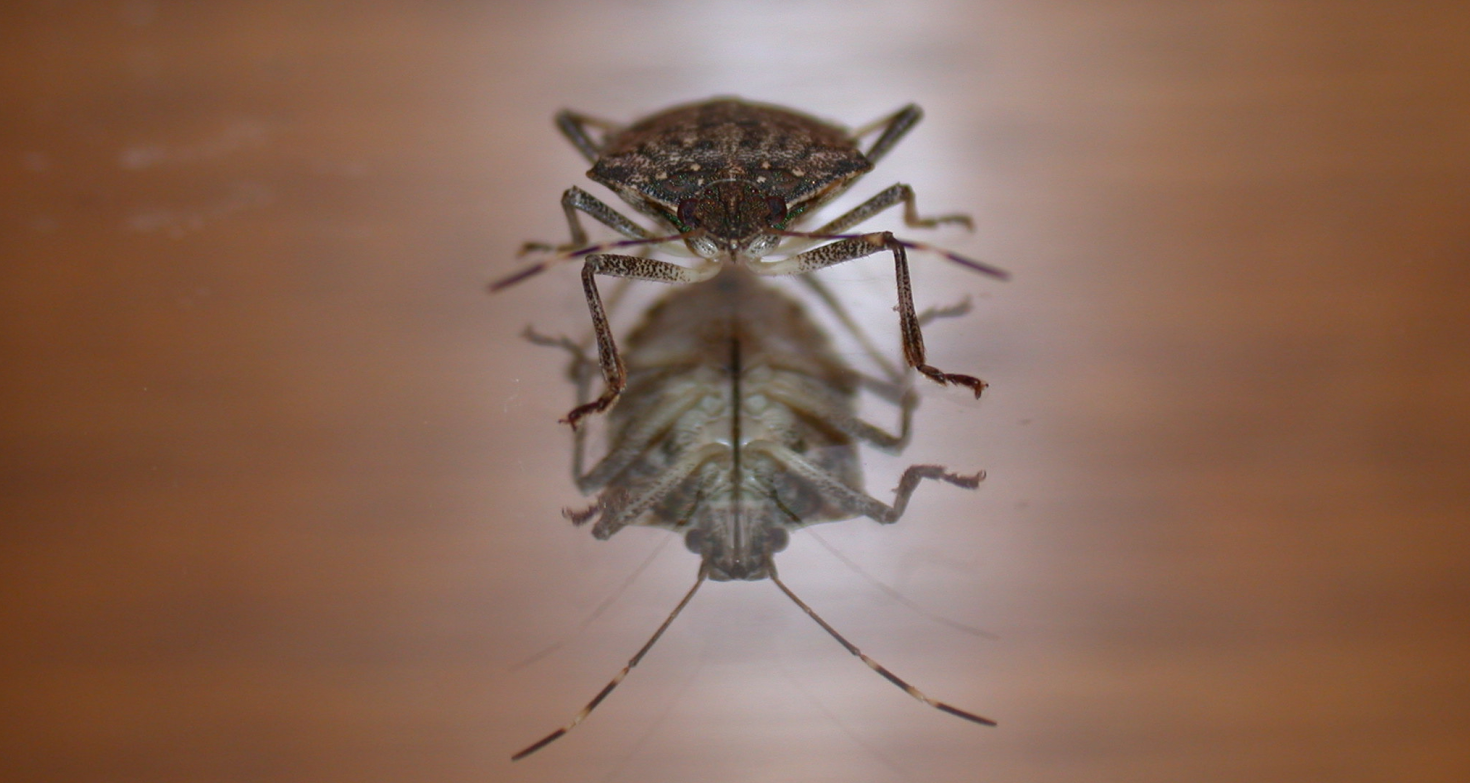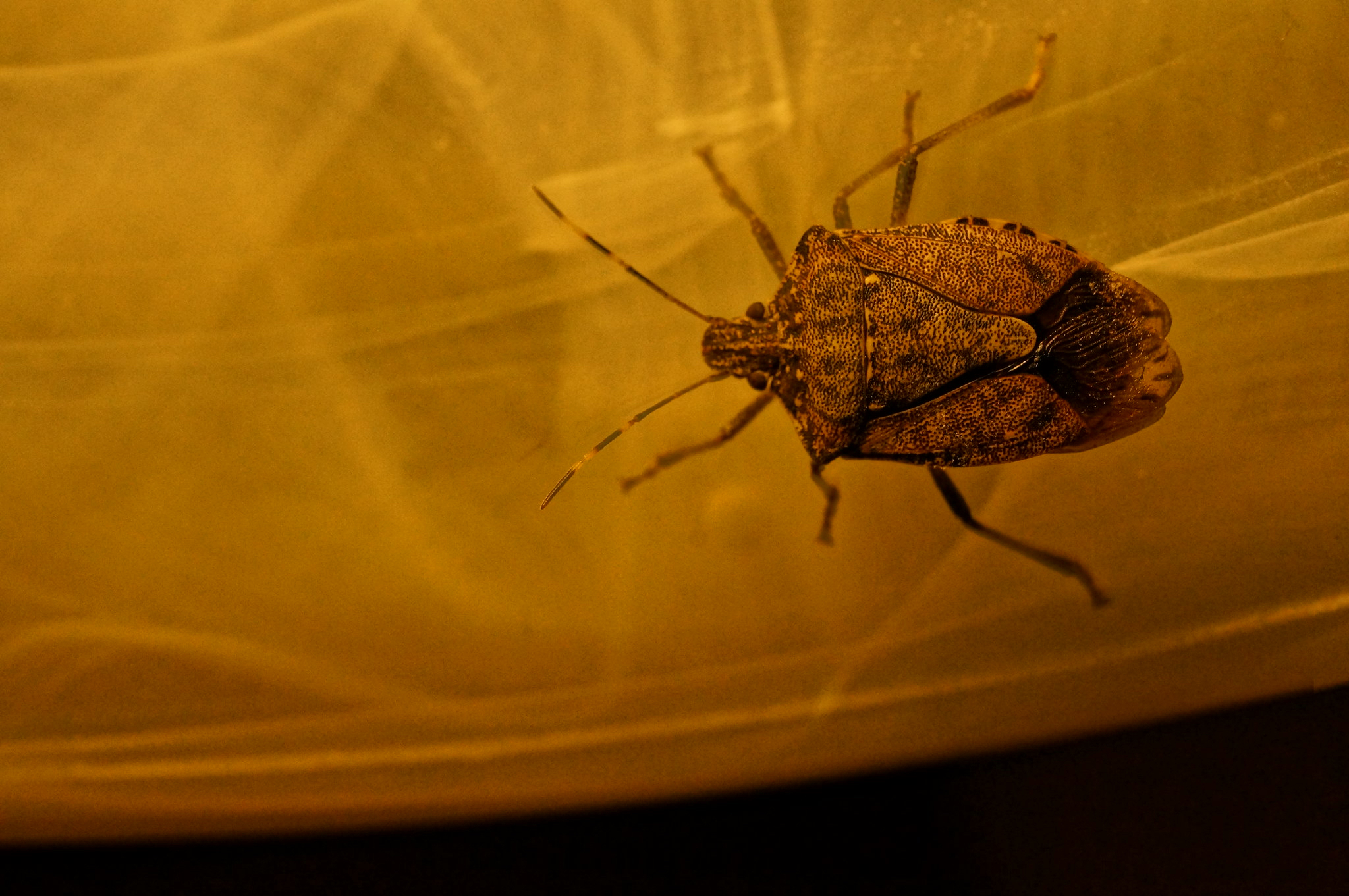BY KIERAN LINDSEY, PhD
The aliens are back.
Just when I thought they were through with me they reappeared, sliding silently through walls that appear solid (but the quantum physicists know better). Suddenly they are everywhere. Staring at me from the rim of a glass when I open the cupboard. Calmly observing me as I sleep from my sweetheart’s framed photo on the bedside table. Waiting undetected in the tub until I fling back the shower curtain. Peering at me from behind the mini-blinds.
As you no doubt suspect, these are not your standard Hollywood issue Sci-Fi ETs. No large vacant eyes gazing out from an oversized cranium balanced precariously on a spindly neck and a child-sized humanoid form. Quite the opposite—they have the build of a bouncer, with a broad, flat trunk and wide, sloping shoulders. The head is insignificant, practically an afterthought. Small, dark eyes scan from behind two banded antennae waving like the arms of a 1960s television robot warning Will Robinson of danger.
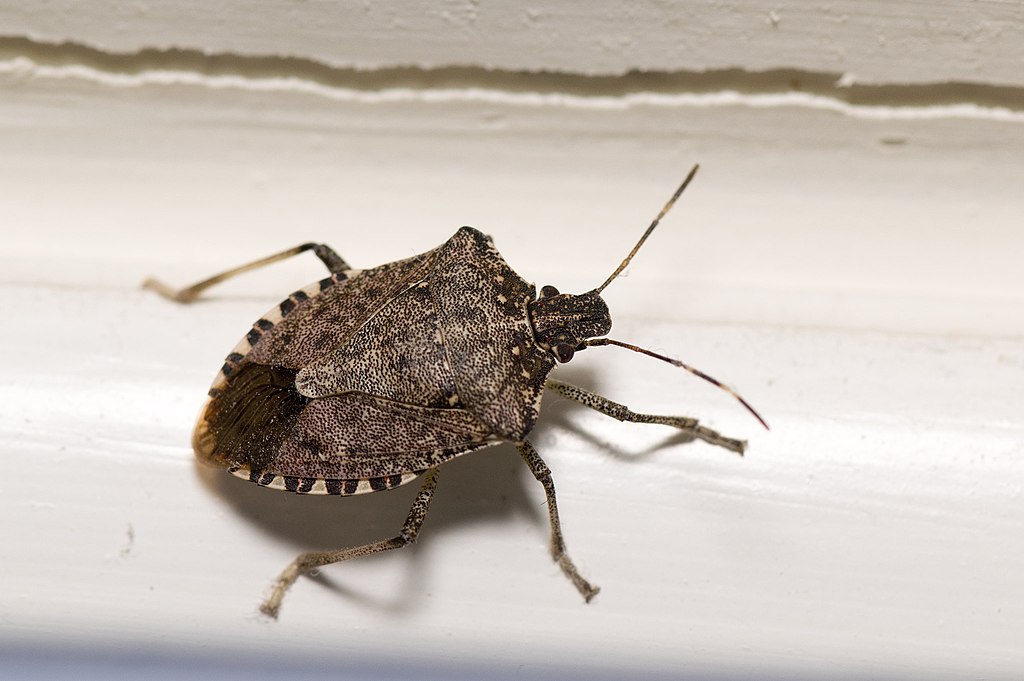
These aliens aren’t otherworldly galactic hitchhikers, though. They’re Earthlings. Opportunistic vagabonds who likely stowed away in packing crates shipped from the other side of our very own planet.
There are some native North American members of the Pentatomoidea clan, known more commonly as shield bugs for their triangular shape. Some species are quite beautiful; this particular variety is a real stinker.
Brown Marmorated Stinkbugs (BMSBs, Halyomorpha halys) are about 1.7 cm (0.7 in) long, with alternating dark and light markings along the sides of the body. Despite the name they also come in shades of taupe, gray, and black. Glands on the underside of the thorax and the top of the abdomen release an acrid scent described by some as similar to coriander. Used as a defense mechanism, the odor response can be triggered by injury and nearly any kind of movement. As a result, some homeowners resort to using a dedicated vacuum to beam the beasties up into a sealed chamber where they and their stink can be contained until dispatched outdoors.
BMSBs were first noted on this continent in 1998 near Allentown, Pennsylvania. In less than 20 years they have fanned out across the landscape to over 40 U.S. states. Their population continues to grow dramatically, aided by prolific fecundity. In some parts of the Northern hemisphere they typically produce four generations per growing season but an early spring and extended summer can increase that number to six. The female deposits a cluster of approximately 25 eggs at weekly intervals. Red or orange tick-like nymphs emerge, experiencing five molts or instars as they metamorphose into adults, at which point they will follow in their parents’ footsteps and begin propagating, too.
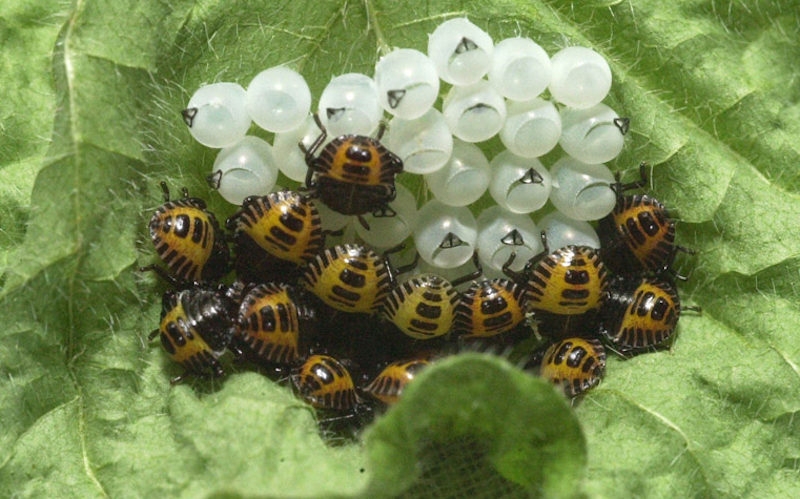
While not classified as social insects, when temperatures drop something like hive-mind takes control and stinkbugs leave established encampments in orchards and agricultural fields. They march and fly by the thousands, Borg-like, toward hospitable interior environments where they will overwinter and ready for the next wave of colonization. This migration is largely undetected by the human population until our homes have become hostels for a six-legged horde.
Because they are an introduced species BMSBs have no natural predators in the U.S., although a 2012 study suggested some of our native wasps and birds are adapting to this new food source. That might sound like good news to the agricultural crowd but—speaking only for myself here—I’ll choose stinkbugs over wasps as roommates any day.
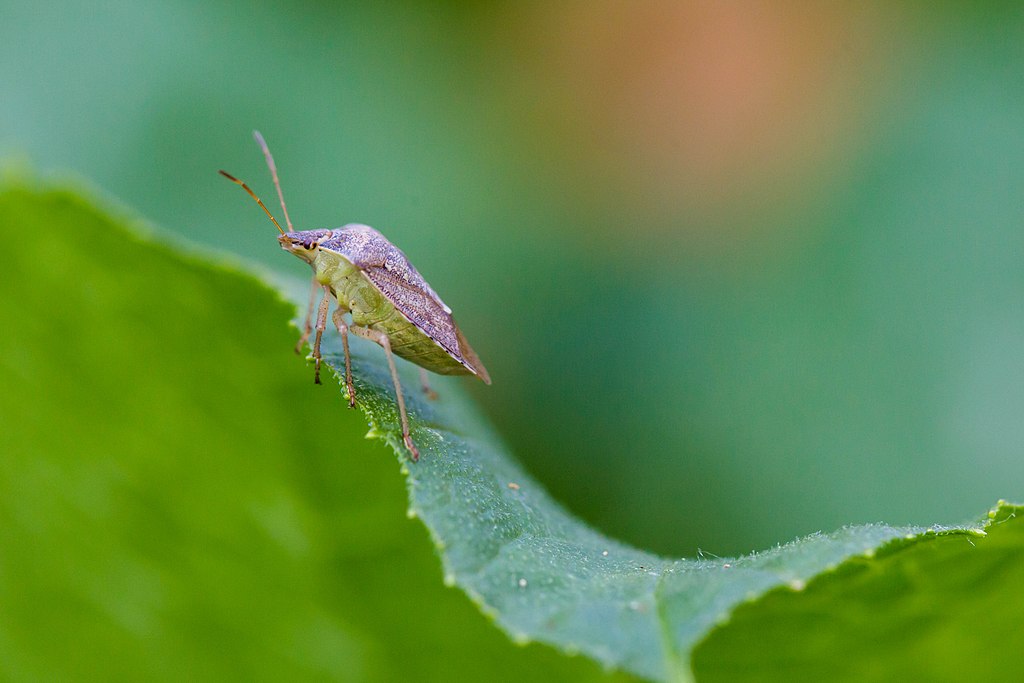
Sure, sharing one’s home with a couple hundred uninvited guests isn’t anyone’s idea of fun but BMSBs aren’t a threat to my canine companion or me. Truth is, they aren’t the slightest bit interested in mammals and have never asked to be taken to my human leader. It’s my houseplants they want. The bird’s nest fern, philodendron, and African violet have become their helpless research subjects, probed with a piercing proboscises for the fluid samples upon which the aliens feed.
Hundreds of hours playing video games in preparation for space invaders and all I can do to protect the leafy green inhabitants of my red brick realm is fire up my Dustbuster.
I know more are on the way.
Resistance is futile.
